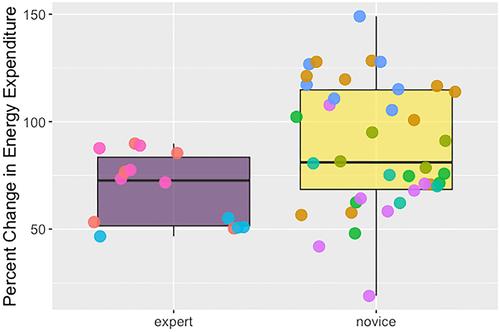Stone toolmaking energy expenditure differs between novice and expert toolmakers
Abstract
Objectives
This study investigates the energetic costs associated with Oldowan-style flake production and how skill differences influence these costs.
Materials and Methods
Nine adult participants, including novice and expert toolmakers, underwent a 2-h experimental session where we measured energy expenditure and flaking outcomes. We measured body mass (kg), percent body fat, and fat-free mass (kg) and used open-circuit indirect calorimetry to quantify energy expenditure. The lithic analysis used standard linear and mass measurements on the resulting cores and flakes. Qualitative observations from the video recordings provide insight into the subject's body positions and hand grips.
Results
Results reveal significant differences in energy expenditure between novice and expert toolmakers, with experts demonstrating lower overall energy expenditure. Additionally, experts produced more flakes, reduced greater core mass per unit of energy expenditure, and exhibited distinct body positions, hand grips, and core/flake morphologies compared with novices.
Discussion
The study provides novel insights into the bio-cultural impacts of stone toolmaking skill acquisition, suggesting that skilled performance reduces the metabolic costs of stone tool production. These findings contribute to debates surrounding the origins of human cultural capacities and highlight the importance of including energy expenditure measures in knapping experiments. Moreover, the results suggest that the presence or absence of expertise in the Paleolithic would have fundamentally altered selective pressures and the reliability of skill reproduction. This study enhances our understanding of differences in stone toolmaking skill and their implications for human energy allocation strategies during early technological evolution.



 求助内容:
求助内容: 应助结果提醒方式:
应助结果提醒方式:


